News

2025.06.30
Notice
Edogawa Collection Workshop Experience Tour Held for the First Time! Seven Participants Enjoy Pottery Painting & Blueberry Picking
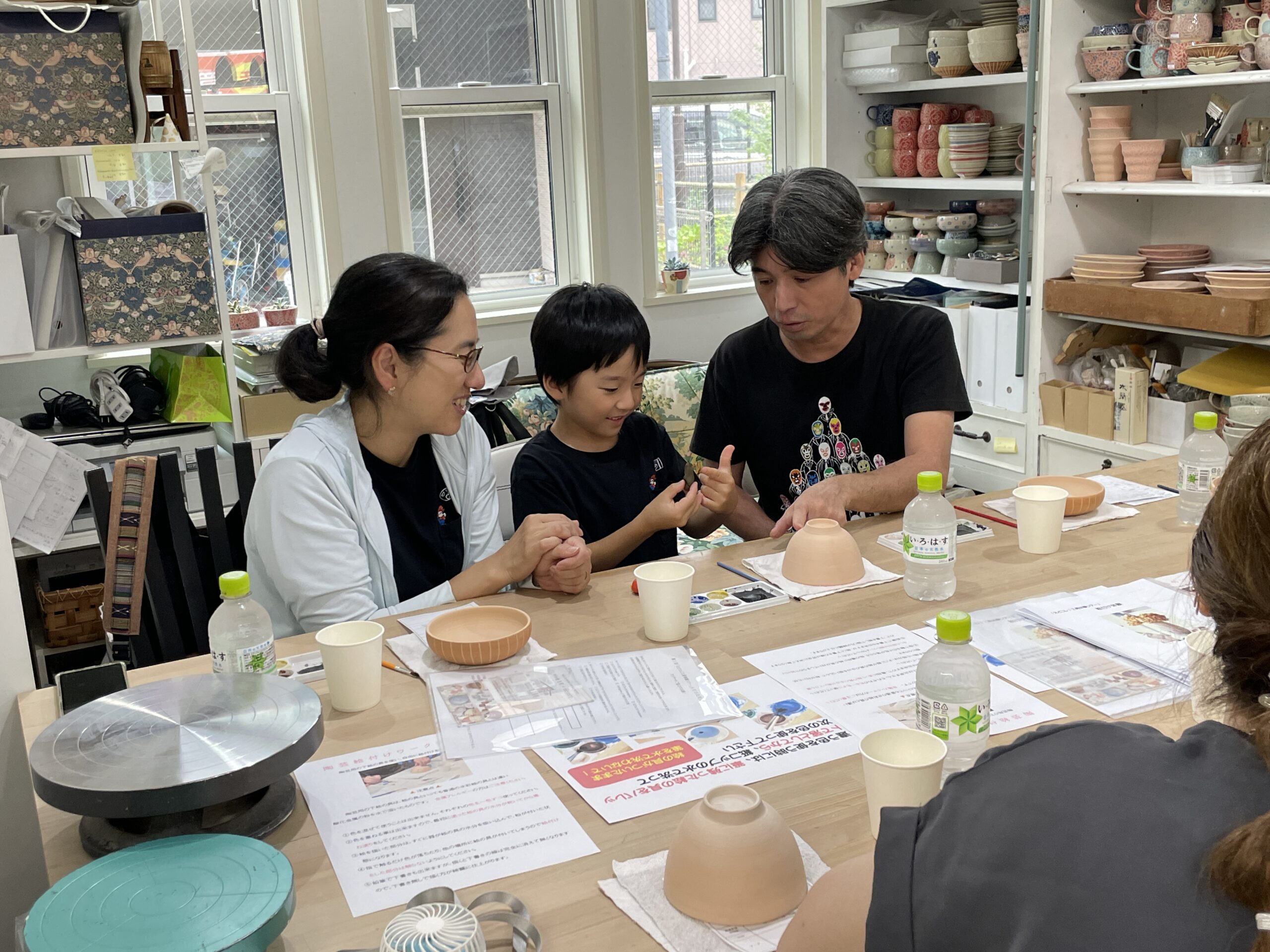
On Sunday, June 15, the very first Edogawa Collection Workshop Experience Tour took place! Seven participants, including families, visited the studios of Kouwayaki Reishiyou / nicorico and Blueberry Farm Tokyo, where they enjoyed hands-on pottery painting and blueberry picking. Here’s a report from the day of the tour.
Painting Kouwayaki Rice Bowls with Local Clay
It was a drizzly rainy season Sunday when the group gathered at the Kouwayaki Reishiyou / nicorico studio in Koiwa.
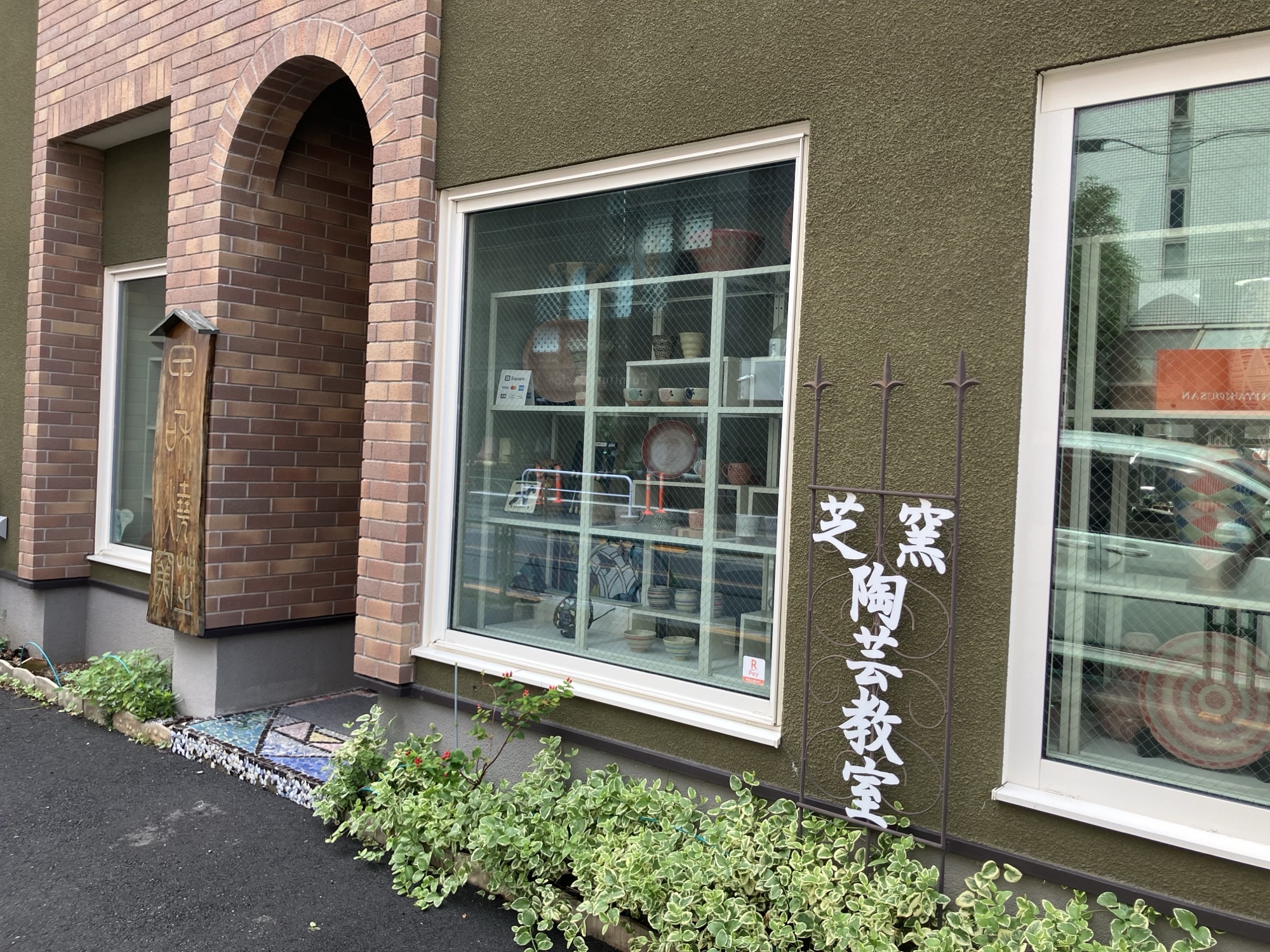
Participants painted rice bowls at Kouwayaki Reishiyou / nicorico.
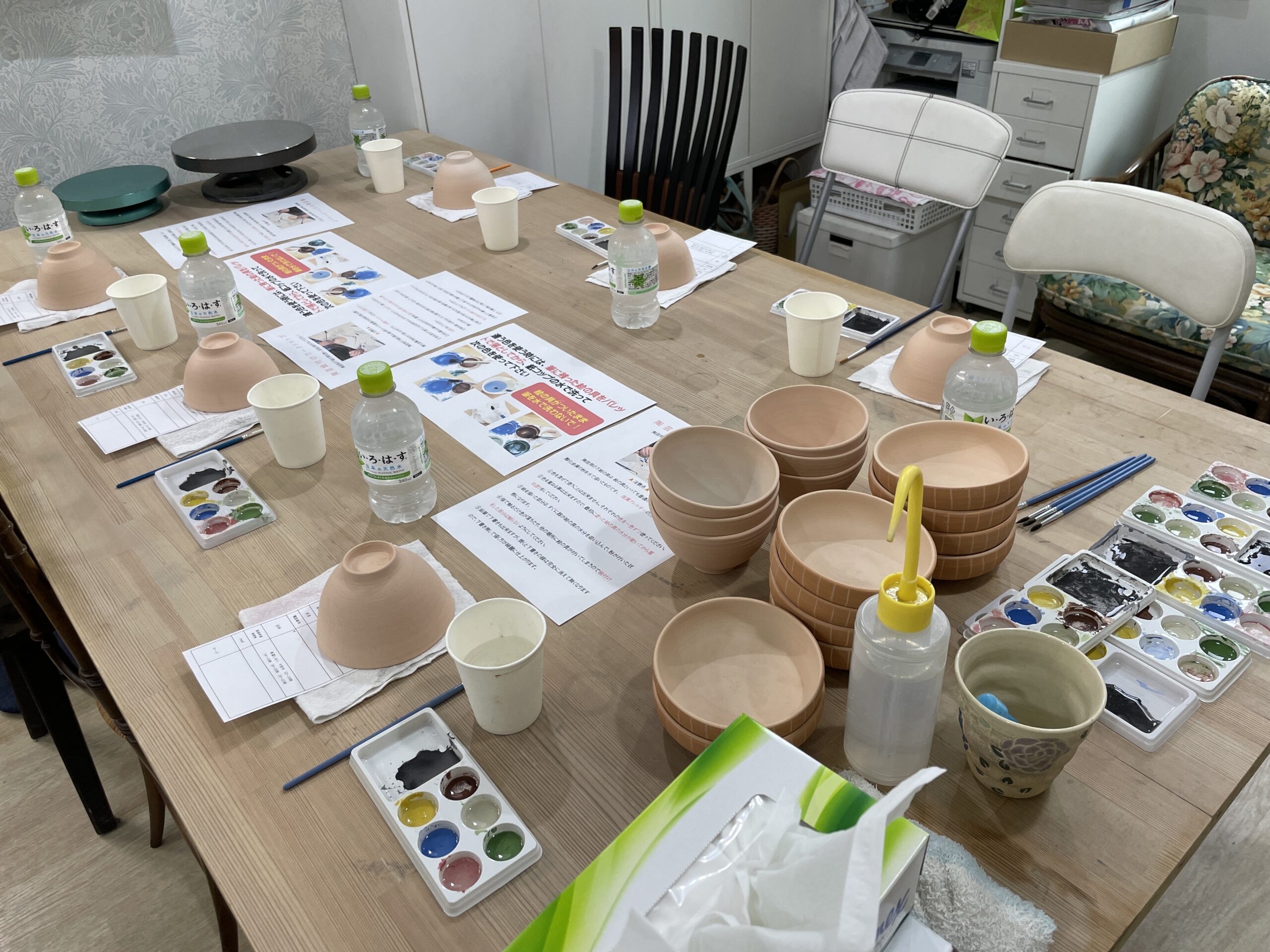
Unglazed rice bowls and paints were set out on the tables.
Excited children buzzed around the table of painting supplies as ceramic artist Hayashi Ayako began by explaining about Kouwayaki and the studio.
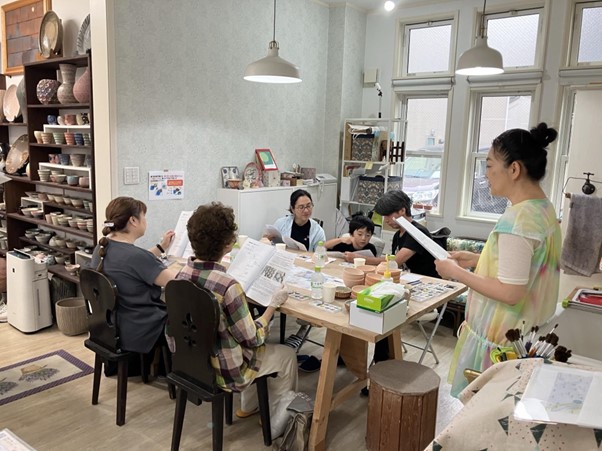
“There are many steps before a ceramic piece is finished,” explained Ayako. Participants listened intently as she shared the differences between ceramic and porcelain materials.
Kouwayaki is pottery made using clay from Koiwa, named after the area’s historic name “Kowari” from the Nara period. Ayako explained that she had once crafted clay from the very soil beneath the studio, and participants found themselves gazing at the floor, imagining the process.
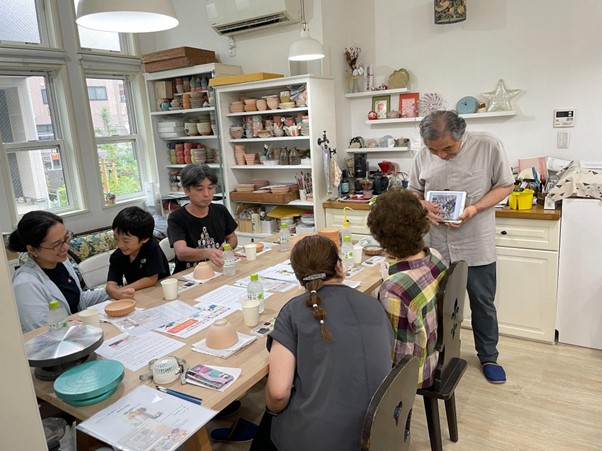
Ceramic artist and studio founder Hayashi Nobuhiro showed participants photos from when the clay was excavated.
One after Another, Ceramics Bursting with Personality Take Shape!
Once the background on Koiwa and Kouwayaki had been explained, the painting session began. Ayako gave tips on using the special metal-based paints and how to apply them smoothly.
Once the painting began, the studio fell completely silent. It wasn’t just the children who became absorbed in their work—adults who hadn’t held a paintbrush in years were just as focused. Everyone quietly moved their brushes with great concentration. Although the painting session lasted for an hour, after just 30 minutes, participants had already begun to complete their rice bowls, each one reflecting their own individuality.
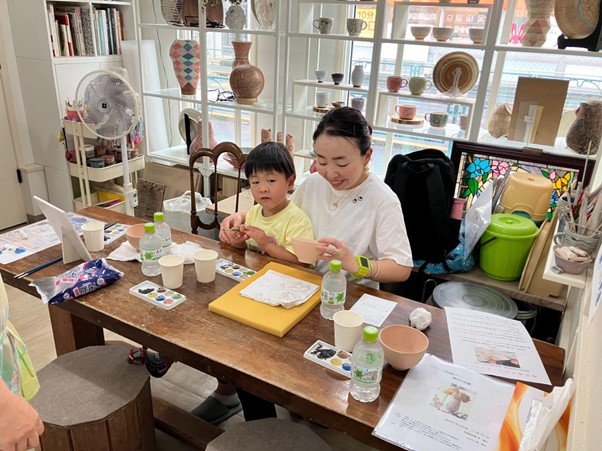
A 4-year-old enjoyed their first try at painting ceramics. When a guardian wondered if 4 was too young, Ayako reassured them: “We’ve even had one-year-olds give it a go!”。
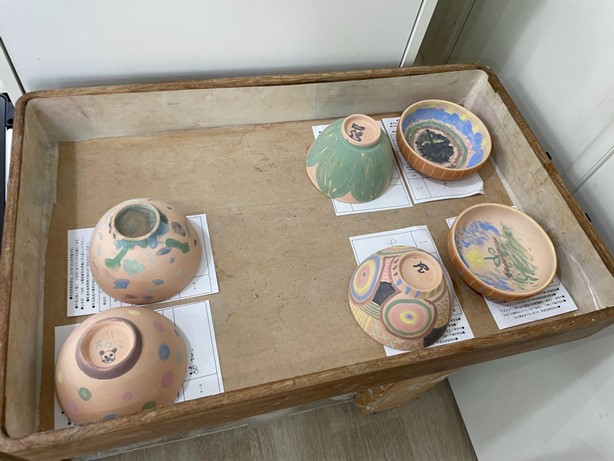
Once painted, the bowls are glazed and fired at 1,200°C, then slowly cooled. They’ll be delivered to participants’ homes in around two months.
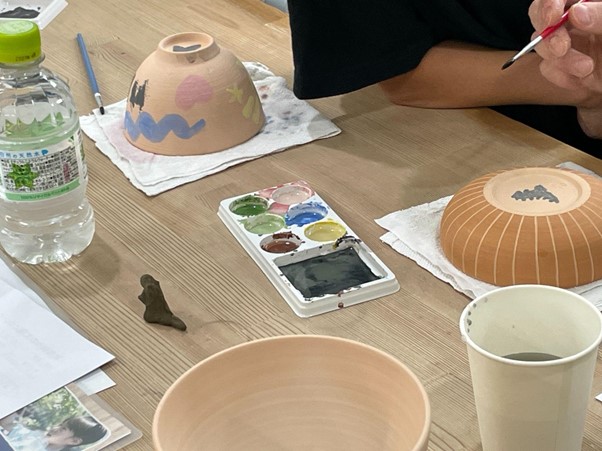
At one family’s table, an adorable clay dinosaur had appeared without anyone noticing.
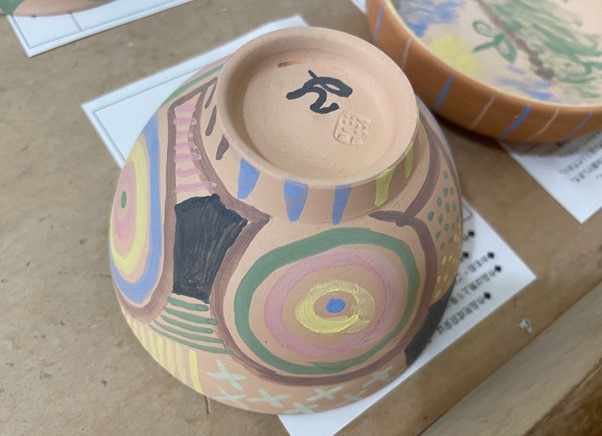
Even the Edogawa Collection staff joined in, eagerly getting into the spirit.
As the session ended, participants happily chatted about their experience. “It was harder to paint than I expected,” said one, while another commented, “It was a rare opportunity to explore the depth of something as everyday as pottery.” The children, who had painted with bold, expressive strokes, simply beamed: “It was so much fun!”
Just like that, ceramics bursting with personality, each entirely one-of-a-kind, came to be.
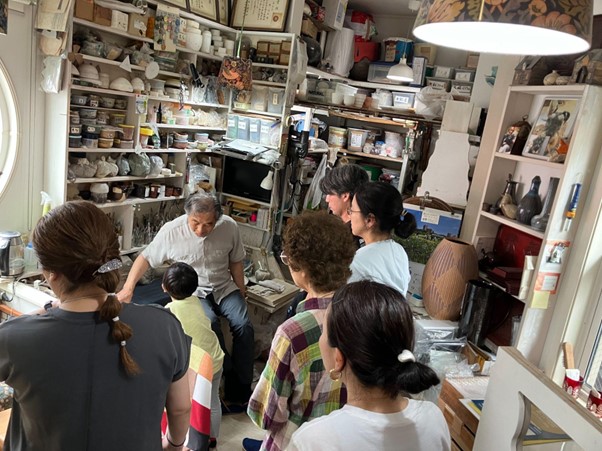
After painting, participants toured the Kouwayaki Reishiyou / nicorico studio, exploring the pottery wheel and peeking into the kiln as it cooled.
Picking Ripe Blueberries at Blueberry Farm Tokyo!
As the skies cleared and the air grew muggy, it was time for the second half of the tour. The next destination was Blueberry Farm Tokyo. Spirits were high as participants made their way through the city toward a farm filled with rows of blueberry bushes—a rare sight in urban Tokyo.
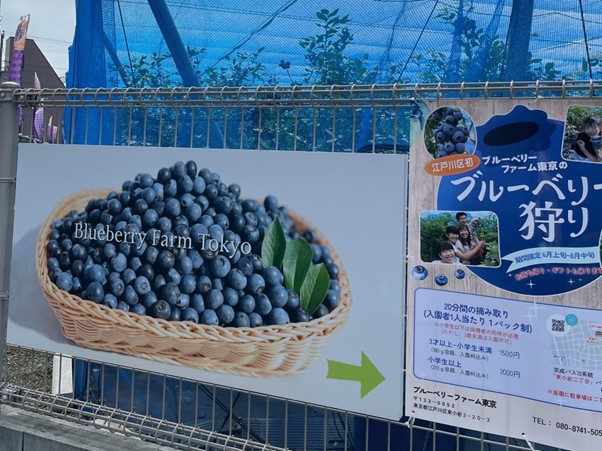
Just a short walk from the bus stop, the blueberry farm comes into view.
Waiting at the entrance was Yano Takayuki, the farm’s owner, who welcomed everyone and gave a brief introduction to blueberries.
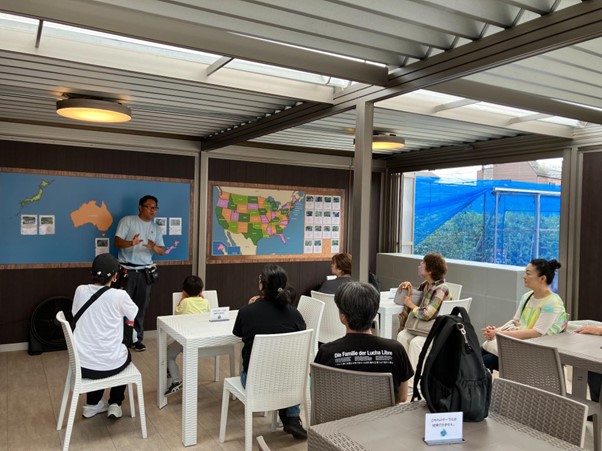
Yano pointed to a map showing the varieties and regions of origin, explaining the appeal of Tokyo-grown blueberries.
“Can anyone guess which prefecture produces the most blueberries in Japan?” Yano asked, prompting puzzled looks. “It’s actually Tokyo!” he revealed to a chorus of surprised laughter.
“Tokyo leads the nation in both production and consumption. We grow a lot—and eat a lot, too!”
One participant remarked, “That’s local production for local consumption at its best!”
Yano went on to explain that many blueberries sold in supermarkets are imported, meaning they tend to be thicker-skinned varieties for long-distance shipping. “But ours are freshly picked and eaten on the spot, so they’re juicier and thinner-skinned.”
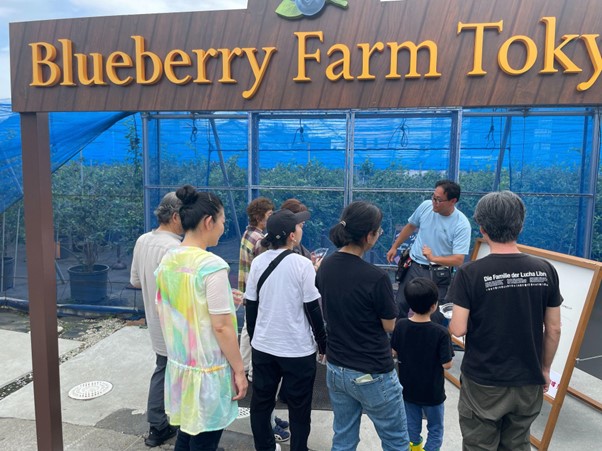
The Hayashi family from Kouwayaki also joined in. “We’ve always wanted to try blueberry picking!” they said cheerfully.
With anticipation mounting, participants lined up at the entrance and received their plastic cups for collecting berries.
“The varieties at their peak today are North Carolina and New Zealand types,” explained Yano. “It’s not an all-you-can-eat setup, but you’re welcome to taste as you pick. Choose your favorites and fill your cup!”
And with that, the blueberry picking began!
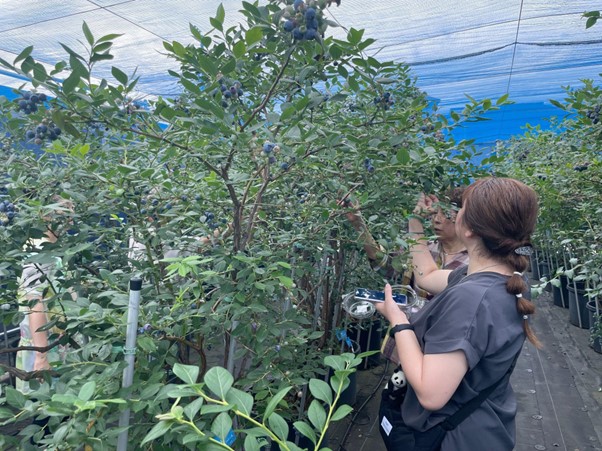
A parent and child sampled berries from sweet varietals. They noted how sweetness varied slightly between types, saying, “We loved the ‘O’Neal’ variety!”
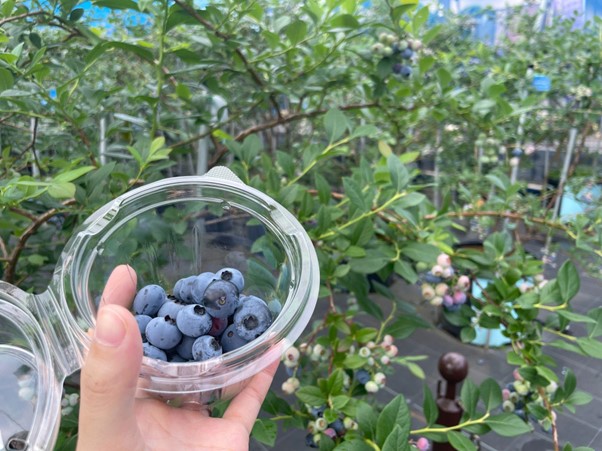
The Edogawa Collection staff fell for the “Sharpblue” variety, known for its plum-like tartness. The cups were surprisingly roomy, and filling them up took more time than expected!
Once everyone had their fill, the experience came to an end.
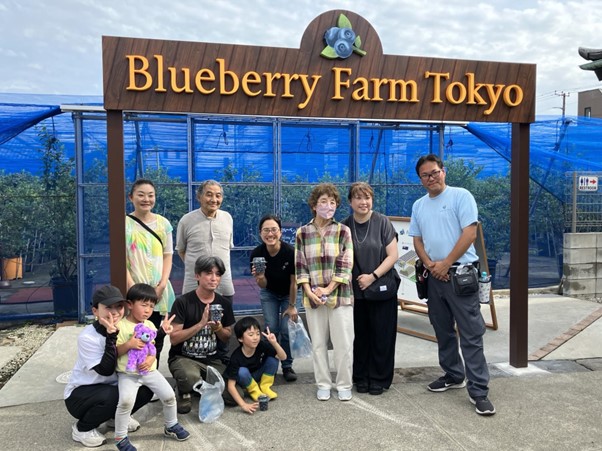
A commemorative photo in front of the farm. The joyful participants showed off the cups full of handpicked berries.
The participants thoroughly enjoyed the chance to paint their own rice bowls at Kouwayaki Reishiyou / nicorico and pick fresh fruit at Blueberry Farm Tokyo. The first-ever Edogawa Collection Workshop Tour proved to be a fulfilling day that showcased the talent and charm of Edogawa’s local artisans and producers.
More exciting tours and programs are in the works. Stay tuned for future Edogawa Collection Workshop Experience Tours!
Writing: Kato Yuri
